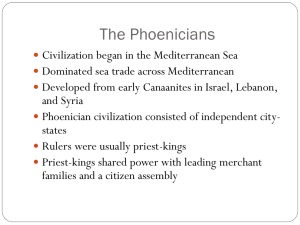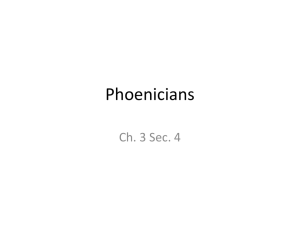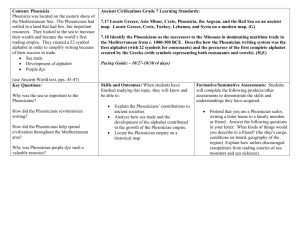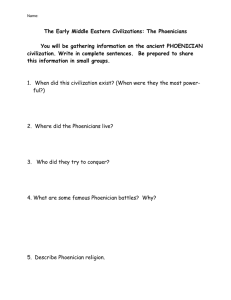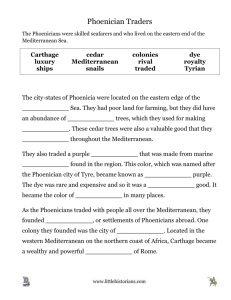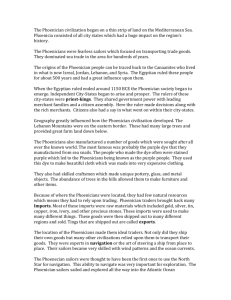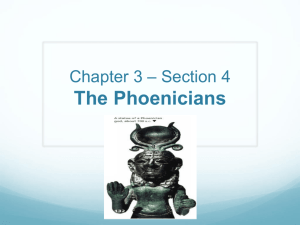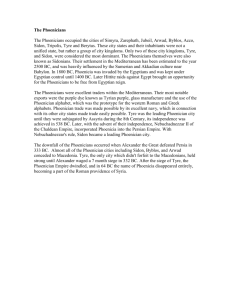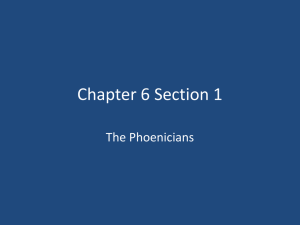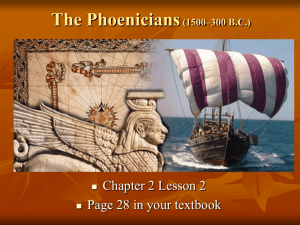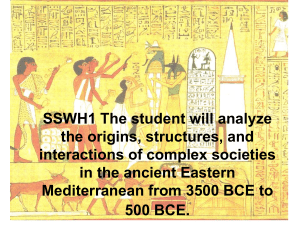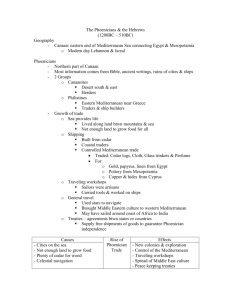Phoenicians: Origins, Trade, and Legacy Quiz
advertisement
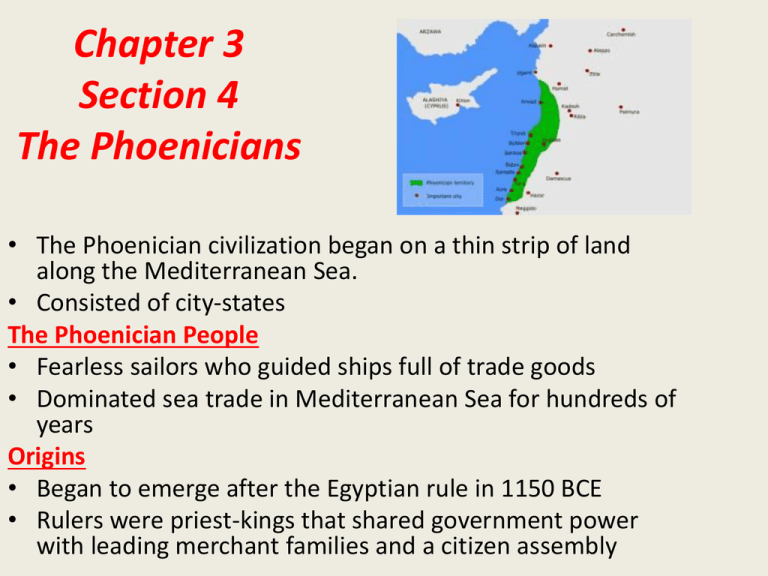
Chapter 3 Section 4 The Phoenicians • The Phoenician civilization began on a thin strip of land along the Mediterranean Sea. • Consisted of city-states The Phoenician People • Fearless sailors who guided ships full of trade goods • Dominated sea trade in Mediterranean Sea for hundreds of years Origins • Began to emerge after the Egyptian rule in 1150 BCE • Rulers were priest-kings that shared government power with leading merchant families and a citizen assembly Farming and Manufacturing • Geography influenced Phoenicia’s development – Heavily forested Lebanon mountains left little flat land for farming • Manufactured many goods – Cloth with a rare purple dye, pottery, glass, metal objects, and wood furniture Phoenician Traders • Few natural resources so they traded – Import is a good or service sold within a country that is produced in another country • Raw materials such as gold, silver, tin, copper, iron, ivory, and precious stones – Export is a good or service produced within a country and sold outside the country’s borders • Pine and cedar logs, wine, olive oil, salt, fish Phoenicians and the Sea • Location was ideal for trade – Western edge of Asia – Many depended on Phoenicians to ship their goods Navigation • Experts at navigation- art of steering a ship from place to place – Knowledge of wind patterns and sea currents – First to use the North Star to guide their voyages Exploring Unknown Waters • Phoenicians were driven to find precious metals – “natives were ignorant of the use of silver, and the Phoenicians purchased the silver in exchange for other goods of little if any worth.” Colonies and City-States • Phoenicians found many sheltered harbors along the Mediterranean Sea – Colonies gave them a place to get supplies or to trade with other peoples • A colony is an area ruled by a distant country – Colonies developed into wealthy citystates • Carthage on North African Coast Legacy of the Phoenicians • Greece and Rome absorbed key elements of Phoenician culture by cultural diffusion – The spreading of cultural traits from one region to another Spread of Culture • Phoenicians helped ideas spread – Standards of weights and measures The Alphabet • Greeks also adopted the Phoenician way of writing • Before the Phoenicians, cuneiform was used which required people to hundreds of symbols • Developed the alphabet – A small set of letters or symbols, each of which stands for a single sound – Phoenician alphabet had 22 symbols and each stood for a consonant sound – Greeks added letters to represent vowels and gave the letters names Chapter 3 Section 4 Quiz 1) The goods made and shipped by Phoenicians to other lands are called a) b) c) d) 2) Goods brought into a country are called a) b) c) d) 3) trade routes colonies city-states territories What city was originally a Phoenician colony? a) b) c) d) 5) exports imports natural resources raw materials Fertile land that attracted Phoenician farmers grew into a) b) c) d) 4) tribute resources exports imports Rome Athens Carthage Sumer The Phoenicians developed a new way of writing known as a) b) c) d) an alphabet a glyph system cuneiform wedge shapes
